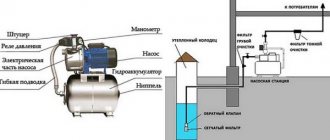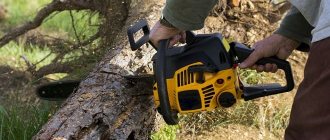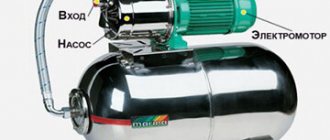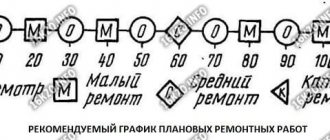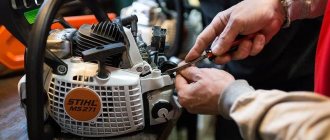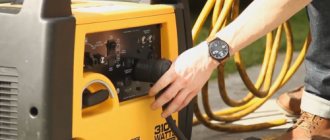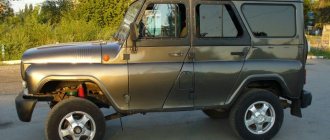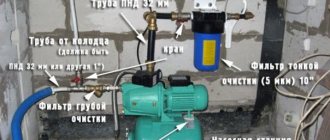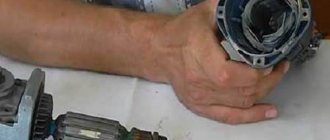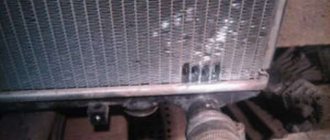Necessary skills and tools for repair
Most of the malfunctions of gasoline chain saws can be fixed with your own hands. True, this requires an understanding of the structure of the chainsaw and how the components function among themselves. As for the tools, the most often needed are:
- screwdrivers (slotted and power);
- combination wrench included in the kit or regular wrenches with heads of various sizes.
Self-repair problems
The problem in many cases is complicated by the lack of comprehensive information on repair technology. According to foreign manufacturers, after the saw has exhausted its service life, it should be scrapped, so the maintainability of many budget-level models raises reasonable doubts.
Professional-grade chainsaws are more difficult to restore.
- The problem is compounded by the high cost of spare parts.
- It is possible that to restore the functionality of individual components and mechanisms, in particular, to configure fuel equipment, special equipment will be required.
Replacing expensive branded parts with affordable but short-lived Chinese analogues does not justify itself economically. Practice shows that these components produce a service life of 50-60% at best.
Engine
In most cases, the following problems occur in engine operation:
- the engine stopped starting;
- the engine starts, but after a while it stalls;
- the engine is not able to develop the required power;
- The engine is extremely unstable.
How to check crankshaft seals
The presence of oil seal leaks can only be checked by getting to the crankshaft itself and carefully examining it for leaks. You can see how to do this correctly in the video:
How to check compression on a chainsaw
At a compression level below 8 atmospheres, the engine will not have enough power, which means the chainsaw will not be able to fully function.
To measure compression you need:
- Remove the protective cover and unscrew the spark plug.
- Insert the tip of the compression gauge into the hole where the spark plug should be located.
- Using the starting cord, rotate the piston and remember the maximum readings of the measuring device.
How to properly install a piston on a chainsaw
The work of replacing the piston for most models of modern chainsaws is carried out according to the following algorithm:
- The top and side covers are removed.
- The candle is unscrewed.
- The stoppers are removed from the shock absorbers and the handle is disconnected from the body.
- The drive sprocket and starter are removed.
- A piston stopper is installed in the spark plug hole and the nut securing the flywheel and clutch is unscrewed.
- The flywheel, clutch, and worm drive of the oil pump, located immediately behind the clutch mechanism, are removed.
- The screws securing the carburetor and air filter are unscrewed, after which these components are removed along with the engine control lever.
- The ignition coil is removed, as well as the muffler.
- The saw is turned upside down and, by unscrewing the screws securing it to the body, the engine is disconnected.
- The pan is unscrewed and the piston is removed.
- Since the piston is removed only together with the crankshaft, to disconnect it it is necessary to remove the retaining rings.
- The old piston is replaced with a new one, but as carefully as possible. This is caused by the high fragility of compression rings.
- The crankcase is put in place, and sealant is used instead of a gasket.
All subsequent actions are carried out according to the reverse algorithm of disassembly.
Chainsaw care - engine, chain, bar
Before moving on to the topic of chainsaw care, it’s worth talking a little about safety of use. The FUBAG FPS 56 chosen as an example is equipped with a chain brake, which prevents the chain from rotating in the event of a kickback. Before starting work, you should always check that the chain brake is working properly.
How to do it? We start the saw at full speed for a couple of seconds and press the safety lever. The chain should stop immediately. If this does not happen, you need to contact the service.
The serviceability of the chain brake can be easily checked even with the engine turned off. It is enough to hit the end of the tire on a hard surface, the protection lever should automatically swing back. Do you remember? Let's move on.
Proper operation guarantees proper operation of the tool for many years. After each working session, it is advisable to clean all elements to get rid of accumulated dust.
Let's start with the engine
Engine maintenance includes blowing the cylinder cooling fins, checking the spark plug, oil, fuel and air filters.
To clean the cylinder fins, remove the air filter and cylinder cover. When reinstalling the cylinder cover, check the correct position of the switch wires and the sealing ring.
To clean the fuel and oil filters, you need to remove them and wash them with chainsaw gasoline, or replace them with a new filter.
It doesn't hurt to check the spark plug periodically. In case of contamination, clean the electrodes with a wire brush and restore the gap to 0.65 mm.
To check the air filter, take it out and remove dust from the surface. If it is very clogged, it is better to wash it in gasoline.
If you clean with compressed air, you should direct the jet to the inner surface.
Chainsaw chain care
1.
Lock the chain in place
2.
Take a round file of the appropriate size
3.
Place the file on the cutter and begin sharpening, keeping it straight
4.
After sharpening each cutter, measure the depth and grind to the desired size.
5.
To minimize the likelihood of kickback and breakage of the connecting link, round the leading edge.
Chainsaw bar care
An important part of a chainsaw is the tire. The performance and quality of the device largely depends on its serviceability. The tire needs regular cleaning.
To clean a tire you need:
To prevent the tire from wearing out, it needs to be turned over from time to time. The guide must always have a perpendicular profile. If you still have to change the tire, then use a tire with the parameters recommended by the saw manufacturer. This will extend the life of both the saw set and the entire saw.
You should also periodically check the sprocket for cracks and signs of wear. If they are found, the part must be replaced. You cannot put a new chain on a worn wheel, or vice versa!
Fuel system
Malfunctions of the fuel system are also quite often the main reason that prevents a chainsaw from working as efficiently as possible. First of all, you need to check the quality of the fuel mixture.
Some owners prefer to use alcohol-containing solutions rather than the recommended brand of gasoline, or add more oil than required.
Gasoline leaks from a chainsaw
If gasoline drops periodically appear on the body of the chainsaw, then it is necessary to check the tightness of the fuel tank. Over time, it may dry out. Or the gasket has become “stiff” and it can no longer perform its direct function.
If full-fledged gasoline streams appear, then there is a high probability that you will have to change the burst hose connecting the carburetor and the fuel tank.
Gasoline does not enter the chainsaw cylinder
There are several reasons why the fuel mixture stopped flowing into the cylinder:
- The air filter is clogged.
- The carburetor settings have been lost.
- The carburetor membrane is no longer intact.
- The channels through which gasoline is transported are clogged.
Filter
A “rich” or “lean” fuel mixture will sooner or later cause a breakdown. Perhaps even expensive. To prevent this from happening, it would be a good idea to regularly check the filter for abrasions, as well as for breaks in the filter fabric itself.
How to check the fuel filter and replace it
To check the current condition of the fuel filter, you must perform the following steps:
- Remove the fuel hose from the carburetor fitting and direct it into a working container.
- Press the so-called “paging” button several times.
If gasoline flows unevenly and jerkily, then it’s time to install a new filter element. This is done quite simply:
- The fuel tank cap is unscrewed.
- Using tweezers or any other device, the filter itself is removed.
- After disconnecting the old filter, you need to install a new one and lower it into the fuel tank.
How to clean the air filter
If a sufficient amount of air is not supplied, the fuel mixture becomes too rich, which leads to disruption of normal engine operation. Regular purging of the air filter, and in particularly advanced cases, washing in a soapy solution will help avoid such problems.
Please note that washing in acetone, gasoline or other aggressive solutions is not allowed. This may lead to damage to the integrity of the filter element.
Malfunction of unspecified category
In some cases, owners of chainsaws have to solve more complex problems to fully restore the functionality of their cutting tool.
The chainsaw does not develop full power
In addition to the problem discussed above with a lack of gasoline or air entering the cylinder, the cause of low power may be a clogged muffler.
If you do not periodically clean the muffler clogged with combustion products, then the problem of poor engine power may not be the only one.
Carburetor depressurization and nozzle blockage
Over time, the screws holding the carburetor cover in place can become loose or the gaskets can become unusable. A clogged filter or improper replacement can lead to clogged injectors. All this also negatively affects the operation of the chainsaw and shortens its service life.
To prevent this, it is enough to periodically inspect the saw and, if necessary, evenly tighten the screws.
Chainsaw won't idle
It often happens that after long-term transportation and constant use, a chainsaw refuses to idle smoothly. As a rule, this problem is eliminated by adjusting the carburetor.
You can learn how to properly debug the carburetor from this video:
If the carburetor is tuned like a clock, then you need to check:
- Fuel system. It makes more sense to start with the fuel pump.
- Muffler. There is a high probability that due to the abundance of accumulated soot, the engine cannot function normally.
Chainsaw loses power under load
If during operation the power of the saw disappears somewhere, then the problem should be looked for in the following places:
- In the muffler. It, as you already understood, tends to get clogged.
- In a clogged fuel filter.
- A poorly functioning fuel pump.
Calibration algorithm and safety precautions when troubleshooting a chainsaw carburetor
The main condition for successful repair is correct diagnosis.
Therefore, in order to determine why the chainsaw failed and, most importantly, how to make it work again, you first need to know the features of its design. It should be noted that it is not particularly complex, as it includes:
- engine (two-stroke petrol);
- functional part (saw bar and chain);
- systems that ensure the joint operation of these two components (ignition, filtration, lubrication, etc.), that is, the tool as a whole.
In order to simplify the diagnosis of faults, they are usually divided into two main categories:
- engine malfunction;
- malfunctions of other chainsaw components.
The most common failures occur in engine systems. however, other parts of the tool may fail at any time due to intensive use or improper care. How to determine exactly where the breakdown occurred? Simple logic will help us with this.
If the problem is in the engine, it will:
- won't start;
- stall;
- work unsteadily;
- overheat;
- smoke;
- develop insufficient power.
As for all other faults, as a rule they manifest themselves when the engine is running normally.
Carburetor adjustment is performed in two stages:
- Basic (carried out with the engine off).
- Finish (carried out with the engine running, preheated).
For basic adjustment, screw screws H and L until they stop and turn them back 1.5 turns. Final adjustment requires that the engine be warmed up for 5-10 minutes at low speeds.
The final calibration is performed by turning out the idle screw until the minimum engine speed is reached (its operation must be stable and the chain must be motionless). If the engine stops idling, the screw must be returned back, and if the saw chain still moves, you should continue turning it counterclockwise.
Calibration check is performed by test:
- Acceleration (when you gently press the accelerator, the engine should quickly gain speed to its maximum).
- Maximum speed (if there are misfires, screw H should be loosened slightly).
- Idling (the chain should not move, and the engine should pick up speed as quickly as possible).
If the owner of the chainsaw is not familiar with the carburetor structure and does not have the necessary tools to calibrate it, you should contact a specialist. A carburetor is a very complex unit, so any incorrect action can lead to irreversible consequences, such as complete engine failure.
If the diagnostics showed that everything is in order with the engine and its systems, then the cause of the malfunction should be sought in other components of the chainsaw. The most common problems are:
- starter failure;
- improper operation of the lubrication system;
- incorrect operation of the chain brake;
- saw chain wear, etc.
If the cause of tool failure is not visible to the naked eye, as is the case with the engine, it is necessary to carefully diagnose the faults and eliminate them in accordance with the manufacturer’s recommendations and safety regulations.
If the previous steps did not solve the problem, then you should move on to checking the carburetor. If necessary, it will be adjusted. If you have not encountered such a problem before and have not made adjustments at home, then it is better to use the services of a specialist.
Otherwise, making any mistake will lead to more serious problems. The carburetor is a complex device that consists of small parts. If disassembled carelessly, parts may be lost.
If you use the tool frequently, problems may also arise with its muffler. During operation, carbon deposits form on the pipe walls, which subsequently prevents the escape of exhaust gases.
To fix this problem, you need to remove the muffler and wash it thoroughly. For this purpose, special detergents are used. Before installing the muffler in place, it must be thoroughly dried.
It is important to know: when cleaning the muffler, it is worth considering that carbon deposits contain carcinogens. When dry cleaning, they can enter the respiratory tract, which can negatively affect your health.
The manual that comes with the chainsaw indicates the need to monitor the chain lubrication system. A common cause of the problem is clogging of the channels responsible for supplying lubricant. If the oil leak is insignificant, then the tool can continue to be used for its intended purpose. But, if you notice a significant leak, it must be repaired immediately.
First you need to check the tightness of the connection of the tubes with the fittings. If necessary, the tubes are replaced or the connection is sealed using special materials.
There is an interesting article with a review of different models of garden shredders.
Read an article on how to choose the right pruning shears for grafting trees here.
It is also necessary to check the oil pump. If cracks are visible on its body, it needs to be replaced.
In cases where the chain brake does not work, a thorough inspection of the brake band is necessary. During operation, it may become contaminated with grease or sawdust.
If your Chinese chainsaw does not start or it works but not efficiently or intermittently, carry out diagnostics to accurately identify the cause before disassembling the tool and looking for replacement parts.
If the engine is silent after starting the starter mechanism, the reason may lie in:
- malfunctions of the main components of the engine (improper fuel or exhaust supply, problem with the ignition system, with the cylinder and its piston group);
- malfunctions of the lubrication system, chain brake mechanism, problems with the clutch (its clutch) with the tire, etc.
The same reasons can lead to the following “symptoms”:
- the engine stalls a couple of minutes after starting;
- the main node works intermittently;
- The engine works well only at idle, and as the speed increases, it stalls, sharply losing power.
When a Chinese chainsaw stalls, inspect the spark plug. If it is completely dry, then this indicates that no fuel has entered the cylinder, which means that the cause of the malfunction of the tool must be sought in another unit. If the spark plug is filled with oil, then you need to adjust the carburetor.
In addition, you need to thoroughly clean the spark plug, turn off the fuel supply, ventilate the chamber after removing traces of fuel, and then start the starter system. When the spark plug is in place, the engine is checked.
Currently reading: Buy Gasoline hedge trimmers - inexpensively
If you notice black carbon deposits, change the oil to a high-quality one or adjust the ratio of consumables. In this case, the spark plug is also cleaned (in some cases a needle or awl will be needed), as well as stripped using electrode sandpaper.
When you install the spark plug in place, be sure to set the gap between the electrodes correctly. The optimal width is 0.5 millimeters.
There may be several reasons for this problem:
- Dirty fuel filter. The cause can be easily identified by inspecting the fuel system after removing the hose. A weak stream of fuel indicates the need to clean the fuel filter. If cleaning does not help, a new hose is installed in this unit.
- The breather installed on the tank cover is clogged. You can clean it with a needle of a suitable diameter.
- Fuel mixture too rich. Again, cleaning the fuel filter helps solve this problem.
- Incorrect carburetor setting. You can set it up yourself, based on the instructions provided in the instruction manual for your power unit.
This problem is indicated by turning off the engine in operating mode (at the same time, the engine runs normally at idle). Check the spark arrester, which can be cleaned of combustion products of the fuel mixture. To do this, the muffler is dismantled and its seat is plugged with a clean rag. You can remove carbon deposits from the muffler using detergents. Before installing this part, dry it thoroughly.
You can suspect a problem when the engine is not running at full power. In addition, it may not start, since low pressure will be generated in the cylinder. In order to accurately identify the cause of the malfunction, check the crankshaft bearings, cylinder pistons, and the cylinder itself. All these parts can wear out.
Causes.
- You will notice oil leaks with the naked eye. In this case, you will need to check the connection between the pump tube and its fitting. Perhaps the cause of the problem is depressurization, as indicated by cracks. The malfunction can be eliminated by replacing the tube and sealant.
- Insufficient oil supply, which may be preceded by clogging of the channels supplying lubricant consumables. The problem is solved by cleaning them.
- Presence of cracks in the oil pump and its housing. Only replacement will help.
The brake system may not function properly or not function at all, causing problems in the operation of the power unit due to clogging of the surface hidden under the protective cover. Another possible cause is a worn brake band. The tape can be replaced, and if clogged, clean thoroughly.
In order to less often encounter various problems in the operation of the saw, check various parts of the device for wear, including the anti-vibration unit, guide, and all sprockets, including the main one.
We recommend watching
- Why does a chainsaw cut crookedly? There is a solution!
- Filling a spark plug on a chainsaw - solving the problem
- Chainsaw Shtil 180 will not start: causes and repairs
- How to change a sprocket on a chainsaw?
- Construction and repair of a chainsaw oil pump
- Replacing oil seals on a chainsaw: Shtil, Ural and others
Malfunction of other systems
In some cases, chainsaw users report other problems that do not significantly affect the operation of the tool.
Why does a chainsaw smoke?
Most often, excessive smoke appears when oil is added excessively to the fuel mixture, which does not have time to burn completely. You should also check to see if the carburetor settings have gone wrong.
Recoil when starting a chainsaw
In most cases, recoil at the moment of startup signals the decompressor clamping. If the tool is not equipped with a decompressor, then most likely the ignition system is faulty.
Malfunctions of Chinese chainsaws: review of popular ones and ways to solve them
Buying a cheap chainsaw made in China is not particularly difficult: a huge number of gas-powered tools from the Middle Kingdom are available in markets, construction hypermarkets and online stores. However, a low price almost always hides poor quality.
The most popular malfunctions of Chinese chainsaws include:
- Poor performance of the lubrication system. Clogged oil channels are cleaned, and if the oil pump fails, replacement is necessary.
- The starter cable breaks.
- Breakage of the plastic starter axis. To replace it, a regular metal bolt will do.
If there is the slightest suspicion that the chainsaw is not working properly, you should immediately carry out a full diagnostic of the tool. Only with proper operation and timely maintenance can you count on a long service life of the chainsaw.
It would seem, why does a summer resident who grows vegetables and fruits, or the owner of a country house with a small garden and several flower beds, need a chainsaw? The question disappears when the desire arises to build a bathhouse, update a greenhouse, knock down an old business, or simply make a bench for relaxation. Unfortunately, any mechanism periodically needs maintenance and replacement of spare parts, and for this you need to have a good understanding of the structure of the product, besides, repairing a chainsaw with your own hands will save time and money.
Checking the ignition system
The first thing you need to do if your chainsaw breaks down is to inspect the spark plug by disconnecting the wire and carefully unscrewing it with a special wrench.
Components of the chainsaw ignition system: 1 – flywheel with magnets, 2 – ignition module, 3 – spark plug, 4 – high voltage wire
The spark plug is unscrewed to check its condition
Her appearance speaks volumes:
- Dry. Most likely, the fuel mixture is not getting into the cylinder. The problem is not in the ignition system, so the spark plug is screwed back in.
- Heavily splashed with fuel. The reason for the excess fuel mixture lies either in violation of the starting rules or in incorrect carburetor adjustment. The spark plug is thoroughly wiped, the fuel supply is turned off and the starter is turned on to remove excess fuel and ventilate the combustion chamber. Then the candle is placed in place and the mechanism is started again.
- Covered with black soot. This may indicate the use of low-quality oil, an incorrectly adjusted carburetor, or an incorrectly calculated ratio of gasoline to oil. The spark plug should be washed, removed from carbon deposits with a sharp object (an awl or a needle), the electrodes should be wiped with sandpaper and placed in place.
When checking the spark plug, you need to pay attention to the gap between the electrodes: 0.5 to 0.65 mm is considered normal. A damaged or worn gasket must be replaced.
A large amount of black carbon deposits on the spark plug indicates problems with the engine.
To be completely sure, you should also check for a spark. To do this, put the ignition cable on the spark plug, connect the spark plug nut and the cylinder with pliers, turn on the starter and watch for the appearance of a spark. If it is missing, the spark plug needs to be replaced. If the new spark plug also does not produce a spark, the problem is in the high-voltage wire or in a broken connection to the spark plug.
In what proportions should I mix oil and gasoline for chainsaws?
The chainsaw is equipped with a single-cylinder two-stroke engine that uses a fuel mixture to operate. To refuel you will need 92 gasoline and special oil for two-stroke air-cooled engines.
Mix the mixture well in a separate container. Owners of FUBAG FPS 56 are lucky, because it is already included in the kit. After preparing the fuel mixture, pour it into the gas tank.
The fuel mixture for a chainsaw is not the only place where oil is used. The devices have another technological tank where chain lubricant is poured. By the time the fuel runs out, the chain oil also runs out, so you will need to top it up every time after refueling the tool.
Our saw is loaded. Let's start the engine and test the oil supply.
1.
Check the gas tank and oil tank caps.
They must be tightly closed. 2.
This model has an easy start system and a primer - a fuel pumping button. Pull out the choke handle and turn on the ignition switch.
3.
Pull the manual starter. Important! The saw should not be in your hands, only on the ground! This is necessary to avoid injury when jerking.
4.
Let the engine run for 30-40 seconds at idle speed, after which the air damper can be moved to its original position.
The saw is ready for work, press the start levers. This model is equipped with an anti-vibration system, which significantly reduces the load on the operator. To stop the saw, simply release the start button. The chain will stop; the engine must be idled for several minutes. After this, move the ignition switch to position O.
We sorted out the engine. Now let's evaluate the correct supply of chain oil.
To do this, after starting the engine, run the chain at medium speed to remove excess oil. If necessary, adjust the feed using a screwdriver. You need to insert it from the bottom side of the coupling and set the desired oil flow.
Fuel supply system repair
Fuel may not enter the cylinder for the following reasons:
- Fuel filter is dirty. You should remove the fuel hose and check how the fuel flows. If the stream is weak, the filter may need to be cleaned. It is taken out through the filler hole of the fuel tank and cleaned; in case of severe contamination, it is replaced with a new one. As a preventative measure, it is recommended to replace the fuel filter once every three months.
- Clogged breather (hole in the fuel tank cap). They also check by disconnecting the hose; if clogged, clean it with a needle.
- Lack or insufficient fuel. There may be several reasons for the malfunction. The first reason is a clogged air filter. Air stops flowing into the carburetor in the required quantity, and therefore, due to the fuel mixture being too rich, engine operation is disrupted. The dirty filter is carefully removed, cleaned and rinsed in water, then dried and replaced.
Another reason is incorrect carburetor adjustment. Adjustment is made with three screws.
Timely replacement of the fuel filter guarantees a complete fuel supply
The fuel hose and choke actuator must fit tightly to the fittings
The throttle cable must be in place.
During work, you must use the instructions, otherwise you can only make things worse.
And the last reason is a violation of the integrity of the membrane or clogging of the carburetor channels.
All parts must be clean, dry and in good working order.
Killed by a chainsaw or still fixable.
1) How bad is the wear on the piston and cylinder? 2) How damaged was the carburetor? 3) What can be done, if it’s not too late, to return the saw to its normal operating rhythm? That is, what and how to properly rinse the engine before using branded oil?
By the way, if anyone is interested, here are the instructions for setting up the carburetor:
Important! When adjusting, the clutch and its cover must be in place. Carburetor adjustment may vary depending on humidity, temperature and
air pressure. L-low speed adjustment. H-adjustment of high speeds. T-adjustment of idle speed. Using L and H, the amount of fuel that is supplied to mix with air, opened by the gas regulator, is set. When turning clockwise, the mixture of air and fuel will be leaner (less fuel), and vice versa. Screw T adjusts the position of the throttle handle at idle speed. When turning screw T clockwise, the idle speed will be higher, and vice versa.
With a properly adjusted carburetor, the engine responds quickly to the throttle and rumbles slightly when reaching high speeds.
mixture adjustment for high speed:
If the engine stalls or runs erratically instead of revving when the throttle is opened, turn screw L 1/16 turn counterclockwise until the revs rise smoothly.
idle mixture adjustment:
idle speed adjustment:
When making fine adjustments, the air filter should be clean and the cylinder cover should be in place. 1. Set the engine to idle mode. 2. Adjust screw T until stable operation is achieved without chain movement, turn the screw clockwise to increase engine speed if it stalls, and vice versa to slow down operation and/or prevent chain movement. 3. No further adjustment is required if the chain does not rotate at idle and the engine is running normally.
It is usually produced at the manufacturer's factory. The mixture during preliminary adjustment is richer than required for optimal adjustment (the number of maximum speeds is 600-800 rpm lower than set and should remain so when the engine warms up to operating temperature). To do this, carefully tighten (clockwise) screws L and H until they stop. Then unscrew both screws 1 turn.
Source
Disassembling and cleaning the muffler
If the engine runs great at low speeds, but starts to stall at high speeds, the reason may lie in the muffler spark arrester, which is clogged with combustion products.
- remove the muffler;
- disassemble (there are also non-dismountable models);
- remove carbon deposits using detergents;
- dry with a hairdryer;
- install in place.
Dry cleaning is unacceptable, as carbon deposits contain carcinogens, the inhalation of which is hazardous to health. After removing the muffler, cover the exhaust hole with a clean rag.
Interruptions in the operation of the chainsaw indicate a possible clogging of the muffler
To prevent clogging of the muffler, it is necessary to monitor the composition of the fuel mixture. The amount of oil should not exceed the standards recommended by the manufacturer. Poor oil quality also negatively affects engine performance.
Assessment of the condition of the cylinder-piston group
Often the engine does not start or does not operate at full capacity due to low pressure in the cylinder. It can be caused by wear of the piston or cylinder, stuck piston rings, or worn bearings. You can partially examine the condition of the cylinder-piston group (CPG) by removing the muffler and looking into the opened hole.
A compression gauge placed in the spark plug hole will help measure the compression in the engine - based on the measurement results, we can also talk about the condition of the CPG. Accurate data is obtained only after complete disassembly of the mechanism. If the piston is chipped or scratched, it needs to be replaced. The piston ring must be clean, free of carbon deposits, and be exactly in place.
Wear of the piston and crank mechanism is considered a serious problem
DIY chainsaw starter cord replacement
If the fuel mixture does not enter the cylinder, but the spark plug works normally, this may mean that:
- The fuel filter is clogged.
To clean this unit, remove the fuel hose and check the flow. If it is weak, the filter must be removed through the filler hole of the fuel tank and cleaned or replaced if completely worn out.
As a preventative measure, it is recommended to replace the fuel filter at least once every 3 months.
This is nothing more than a hole in the fuel tank cap, which is cleaned with an awl.
- The fuel mixture is not supplied or is supplied in insufficient quantities.
There may be several reasons for this:
- the air filter is clogged (in this case, it must be removed, washed with water, dried and replaced);
- the carburetor settings have gone wrong (which means this unit needs to be adjusted again);
- the integrity of the carburetor membrane is damaged (must be replaced);
- the carburetor channels are clogged (it must be disassembled and all parts and components cleaned).
If the chainsaw engine does not start or cannot develop normal power, it is likely that there is not enough pressure in the engine cylinder to burn the fuel mixture. The reason for this may be wear of the elements of the cylinder-piston group - piston, rings, bearings, etc. In order to assess the condition of this unit, it should be visually inspected after first removing the muffler.
For a more complete diagnosis, a compression gauge is placed in the spark plug hole of a two-stroke chainsaw engine. It is used to measure compression in the engine. Based on the test results, one can judge the condition of the CPG, but accurate facts can only be obtained by completely disassembling the unit.
If the piston is chipped or scratched, it will obviously have to be replaced. The same applies to deformed or broken piston rings - for normal engine operation they must be fully functional and free of carbon deposits.
It’s not for nothing that they say that everything doesn’t last forever. The starter cord of the chainsaw broke - the workshop is far away, and there are no funds for repairs. What to do? You can quickly and easily do it yourself.
Does the ignition switch often knock out? A little trick to get around this problem.
Do you need to replace the drive sprocket on your chainsaw? We watch and learn how this is done on Husqvarna chainsaws / Husqvarna models 142, 365; STIHL / Calm MS 361 and Chinese GooD LuCK.
Video about the lubrication system of Husqvarna (Husqvarna), Pertner (Partner), Chinese Kanakova chainsaws, namely about oil pumps. Their design, disassembly and assembly, causes of failure and their elimination - all this can be learned from the video.
Repair of the air damper and malfunction of the acceleration of the STIHL chainsaw (calm). You can perform these steps yourself by watching this video.
How is all this done? The cause of the breakdown is that the saw does not start well, does not reach the required speed and stalls. The wizard will show you step by step how to fix these problems.
The jack-of-all-trades will clearly and with humor tell you how to troubleshoot the oil supply of a Shtil chainsaw.
The reason for the breakdown of your Shtil 180 chainsaw is that neither the gas nor the idle speed can be adjusted and it doesn’t start well. It can be fixed. A specialist will clearly present to your attention how the problem is solved in a home workshop.
We inspect the chainsaw and find the cause of the breakdown. The carburetor is clogged and the gasoline supply is out of order. The most common problem with chainsaws of this model. We repair together and eliminate the breakdown.
Currently reading: Chainsaw Attachment for Longitudinal Cutting of Logs
The chainsaw worked for several hours and broke down. What to do? Demonstration of replacing the piston group on a Sterm chainsaw (made in China). Piston diameter 43 mm and 45 mm.
If the chain on a gasoline saw falls off, what should you do? How to return a chainsaw to working condition? Just a couple of minutes and you can do it yourself by watching the video.
Clutches in disassembled form are presented to your attention. What does the clutch consist of, and what common breakdowns occur with these parts? If interested, watch the video review.
Unfortunately, regardless of the build quality, sooner or later chainsaws break. In frequent cases, repairs can be done by yourself. But to do this, you must first determine the cause of the problem. Often, failure to operate is associated with a malfunction of the power unit or other components of the chainsaw.
So, if we talk about the power unit, then a problem may arise in the ignition, fuel supply and starter. Also, the problem may lie in the piston or even in the cylinder. A malfunction of the power unit can be determined by the following signs:
- complete engine failure during operation;
- the unit starts, but immediately stalls;
- the engine is not able to develop the required power;
- there are interruptions in work.
You may be interested in an article on how to repair a Partner 350 chainsaw.
Read about how to make a screw wood splitter with your own hands in our article.
Before taking any action, it is necessary to carefully analyze the situation.
Ignition system elements
Engine problems are often associated with ignition. That is why you need to start your inspection with this system. First you need to take out the candle and carefully examine it. Here you need to carefully remove the wire and unscrew the spark plug. This is done using a special key.
If the spark plug is wet, this is a clear sign of excess fuel. This is mainly due to improper operation of the ignition system or carburetor. As for the candle, it must be thoroughly wiped dry. It is also worth draining the cylinder. To do this, turn off the fuel supply and start the starter several times. Using these actions you can remove excess fuel. Next, the spark plug is installed in place and the engine starts.
Important: before installing the candle, you must make sure that it is free of dirt and moisture. This will directly affect its performance.
If there is black carbon on the spark plug, this indicates the use of bad oil or the combination of oil and gasoline in the wrong ratio. In some cases, carburetor adjustment may be necessary. Here the candle must be cleaned of carbon deposits and installed in the socket.
If the tool still does not start, then it is worth checking for a spark: put a high-voltage cable on the spark plug and lean it against the cylinder. After this, you need to pull the starter several times. As a result, a spark should occur between the electrode and the cylinder.
If the above steps do not produce results, then it is worth replacing the spark plug and checking the tool in operation. If a spark does not occur, then the problem is probably hidden in the high-voltage wire.
When the inspection does not produce results, you can begin to diagnose the fuel supply system. The cause of the system problem may be:
- dirty fuel filter;
- stopping the hole in the tank lid;
- supply of a small amount of fuel.
Here, first of all, you need to disconnect the fuel hose and check whether fuel is leaking from it. Provided that the fuel flows in a normal stream, then everything is fine.
If the stream is weak or completely absent, then you need to clean the hole in the lid with a needle. To clean the filter, you need to drain the fuel. Using a hook, the filter together with the suction hose is pulled out through the filler hole.
The filter needs to be thoroughly cleaned or replaced with a new Chinese analogue, which is low in cost. The fuel filter should be cleaned every 3 months. With frequent use of the tool, the frequency of cleaning increases.
An important element of the system is the air filter. It is recommended to clean it periodically. You must remove the filter very carefully, otherwise dirt may get into the carburetor.
In addition to the above problems, other problems may occur with the chainsaw. This mainly concerns consumable parts that have their own service life. Thus, during operation, the tire, drive sprocket and other parts may leak.
To prevent the occurrence of more complex problems, it is necessary to change such parts in a timely manner. With such knowledge, you will be able to repair such chainsaws as Druzhba 4, Shtil 180, Husqvarna, Ural, with your own hands. This will significantly reduce repair costs.
DIY chainsaw repair Partner 350 - video
Do-it-yourself chainsaw repair Shtil 180 - video
DIY chainsaw repair Husqvarna 137, 142, 240, 365 - video
How to shorten a chainsaw chain with your own hands: sequence of actions, nuances of the process and video instructions
Disassembling a Chinese (gypsy) chainsaw. We slowly disassemble the chainsaw.
Adjusting the chain brake
The chain brake often does not work due to grease or sawdust clogging the brake band and the space under the cover. All parts should be cleared of blockages. Perhaps the tape is simply worn out, then it needs to be replaced.
The operation of the chain brake is restored by mechanical cleaning
Some parts of a chainsaw wear out faster than others. These include the drive sprocket, tire, chain, and anti-vibration elements. For quick replacement, it is better to always have spare parts on hand. Don't neglect sharpening the chain.
Home page » How to Remove the Gas Tank from a Chainsaw
Related Posts
Proper disassembly of a chainsaw
- Technological process of repairing a Shtil chainsaw
- Engine repair, ignition
- Chainsaw disassembly sequence
Disassembling a chainsaw is a very important moment that occurs at some point for the owners of such a tool. Owners of chainsaws have to carry out technical maintenance on their own. How to disassemble a chainsaw quickly and accurately?
Regular maintenance of your chainsaw will make working with it comfortable and safe.
In order for the chainsaw to work flawlessly, it is necessary to carry out frequent maintenance, consisting of several operations:
- oil change;
- topping up fuel;
- adjusting chain tension;
- cleaning dirt under the lid;
- chain brake inspection and repair;
- cleaning the oil supply system;
- tire cleaning;
- cleaning or replacing the filter.
Chainsaw diagram "Calm".
The time comes and all these operations must be completed. Therefore, you need to learn how to quickly and correctly disassemble chainsaws.
The Shtil chainsaw has long been loved by lumberjacks due to its low cost. It can be seen in the hands of summer residents, and city services do not refuse such a chainsaw.
However, among the many positive qualities of this model, there is one serious drawback. How to remove a magneto from a chainsaw - www.fassen.net. Chainsaws break down very often. Moreover, not every malfunction will be repaired in accordance with the warranty. How to remove the carburetor from a husqvarna chainsaw. You have to do the repairs yourself.
To do this you must have:
Assembling a chainsaw using the example of Fubag FPS 56
Like most of its analogues, the chainsaw is supplied disassembled: the body, a separate bar and a saw set. In addition to the main parts, the kit includes: a tool kit, a container for gasoline mixture, a tire cover, a toothed stop, a file for sharpening a chain and reliable safety glasses.
Everything is clear with the kit - let's move on to assembly:
1. Move the protective cover towards the front handle to make sure that the chain brake is turned off.
2.
Loosen the nuts and remove the chain cover.
3.
We install the cutting link (for the FUBAG FPS 56 chainsaw it is included in the kit).
4.
We turn the chain on the sprocket and at the same time install the bar on the saw body.
5.
We check whether the direction of rotation of the saw chain is set correctly.
6.
Place the chain guard on the main body of the saw and tighten the nuts by hand.
7.
We adjust the chain tension by turning the tension screw until the connecting link touches the bottom side of the guide.
8.
Raise the end of the tire and finally tighten the nuts.
9.
We manually check the uniformity of rotation and the degree of tension of the saw.
If the chainsaw has a gasoline tool tensioning system, such as the FPS 37 saw model, then the assembly process will take no more than a minute. To do this you need:
1.
Place the bar and chain on the chainsaw studs in the correct way (the cutting teeth should be directed in the direction of movement).
2.
Install the cover. To install the cover correctly, adjust the position. pins on it so that they fit into the holes in the tire.
Goodluck chainsaw/Fuel tank replacement/Ignition coil replacement.
Disassembling a Chinese (Gypsy) chainsaw
.
How to remove a sprocket from a Husqvarna chainsaw with your own. How to remove the flywheel from - fassen.net. How to remove a sprocket from a chainsaw and. We slowly disassemble the chainsaw
.
The next step requires disassembling the cylinder-piston group of the chainsaw motor. The design of the Shtil chainsaw engine is similar to that of a scooter engine. It is very easy to understand. You need to unscrew the four bolts securing the cylinder head. The cylinder is then carefully removed from the block. The piston must look perfect. If scoring is detected, it must be replaced. Cylinder repairs are carried out by boring in accordance with the repair size. How to remove a sprocket from a Husqvarna chainsaw, partner... dismantling the carburetor from a chainsaw, how to remove the carburetor from a chainsaw, reason and how. Sometimes the cylinder changes together with the piston.
The engine of the Shtil chainsaw is similar to the engine from a scooter and can be easily disassembled.
After removing the piston, you must carefully examine the condition of the rings. The rings should fit snugly, but they should fit freely on the piston. Then you need to insert the piston into the cylinder and try to swing it, leaning on the top point. If the piston is loose, we can safely talk about its wear. Due to this malfunction, the chainsaw is not able to work at full strength.
Structural elements of chainsaws
All chainsaws are similar in structure, regardless of whether they are made in Europe (ECHO, Stihl, Husqvarna) or at home (Cedar, Urals). The main elements are located inside the body - the fuel tank and the engine, and outside - the starter, handle, part of the saw ( tires) with chain. A sharp tug of the cable starts the motor and it is the saw blade.
To begin with, we suggest you familiarize yourself with video clips that show how a chainsaw works and how it works:
From time to time, saws develop malfunctions that require disassembly. What can happen to such a simple mechanism as a chainsaw? At least the following:
- Stops starting;
- It starts but soon stops;
- It ceases to function in context;
- Loses strength;
Most problems are related to engine failures (fuel system, exhaust system, ignition, piston part of the cylinder) or failures of other systems and components (clutch, chain brake, tire, lubrication system). Let's look at the most common faults and how to fix them.
READ How to Adjust the Carburetor of a Chinese Chainsaw
The working chainsaw starts with one jerk and does not cut
